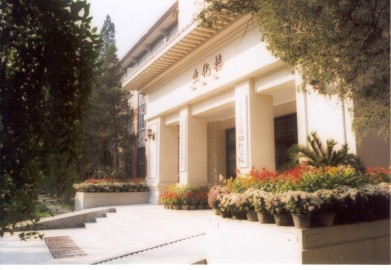History
The history of PKUHSC can be traced back to as early as the beginning of the 20th century. In 1903 the government of Qing Dynasty established the Medical Clinic at the Royal Capital Higher Educational Institute. The next year it was moved into a new place renovated from the Xingsheng Temple at Bajiaoliulijing, Hepingmen Wai. This clinic closed after 4 years of existence in 1907, and it was purchased by the Medical Bureau (the counterpart of Health Department then) in 1910, providing a good foundation for the establishment of the first national public medical school several years later in China.
The 1911 Revolution overthrew the Qing Dynasty and founded the Republic of China. With the fashion of learning from the West growing then, western medicine gained more recognition in China. In September 1912, the Ministry of Education summoned Mr. Tang Erhe, a famous professor of histology trained in Japan who was busy preparing for the establishment of Zhejiang Provincial Medical School, to come to Beijing to plan for the establishment of a national medical school. The Ministry of Education bought the estate of the Medical Clinic at the price of 10,000 taels of silver and gave it to the new medical school. On October 16th, the Ministry of Education appointed Tang Erhe as the President of Peking Medical School. Thus the first national school of western medicine was formally established, having nine staff members with the first admission of 72
 students.
students.
In the decades after its foundation Peking Medical School struggled through the unsteady years of wars and social turmoil. In the 1930s, it was renamed as Peking University Medical School, and was incorporated into Peking University in 1940s
In July 1946, Peking University was re-established in Peking and Professor Hu Shi was appointed as its president. Under his presidency, the No.6 Preparatory Class and the Affiliated Hospital that survived the Anti-Japanese War were restructured to form the Peking University Medical School. Dr.Ma Wenzhao, professor of anatomy, Dr.Shen Junqi, professor of physiology, and Dr.Hu Chuankui, professor of dermatology served as the deans successively in the following years. Dr.Hu was also the chief executive officer of the affiliated hospital (known as Beida Hospital).
In 1952, with the restructuring of higher education system of new China, Peking University Medical School was separated from Peking University and became an independent college named as Beijing Medical College, Dr. Hu Chuankui being its first president. Under the new system, the Ministry of Health became the governing body and funding authority of Beijing Medical College. It was then the college moved to the present address, No.38 Xueyuan Rd.. Thereafter, it began to develop rapidly.
In 1959,Beijing Medical College was recognized as one of China’s 16 key universities.
In 1984, the State Council approved 10 institutions for priority development. Among them, Beijing Medical College was the only medical institution. Prof. Ma Xu was its president at this time.
In 1985, the college was renamed as Beijing Medical University(BMU) with Dr. Qu Mianyu, professor in sports medicine, as the president.
 In the Mid-1990s, the Chinese government completed its reorientation for higher education and worked out its reform guidelines. As a result, the “211 Higher Education Development Project” was put forward to advocate priority development of about 100 higher educational institutions so that they can rank among the top universities in the world. BMU successfully completed the national assessment process and was accredited on Augest 28th, 1996, as one of the first few institutions qualified for the “211 Project.” From 1991 to April 2000, BMU was presidented by the distinguished hematologist, Dr. Wang Debing.
In the Mid-1990s, the Chinese government completed its reorientation for higher education and worked out its reform guidelines. As a result, the “211 Higher Education Development Project” was put forward to advocate priority development of about 100 higher educational institutions so that they can rank among the top universities in the world. BMU successfully completed the national assessment process and was accredited on Augest 28th, 1996, as one of the first few institutions qualified for the “211 Project.” From 1991 to April 2000, BMU was presidented by the distinguished hematologist, Dr. Wang Debing.
On April 3rd,2000, BMU was again incorporated into Peking University. And on May 4th, it was formally renamed Peking University Health Science Center, and Dr. Han Qide, professor of pathophysiology and academician of the Chinese Academy of Sciences, was entitled the President of PKUHSC.


